The future of architecture is culture. Philip Johnson
In a culturally rich country like India, you will find influences of art, history and mythology everywhere, except in one place – yes, you got it right – the shopping malls that have come up in all the cities – they are all “air-conditioned, sanitized, standardized” and devout of creativity.
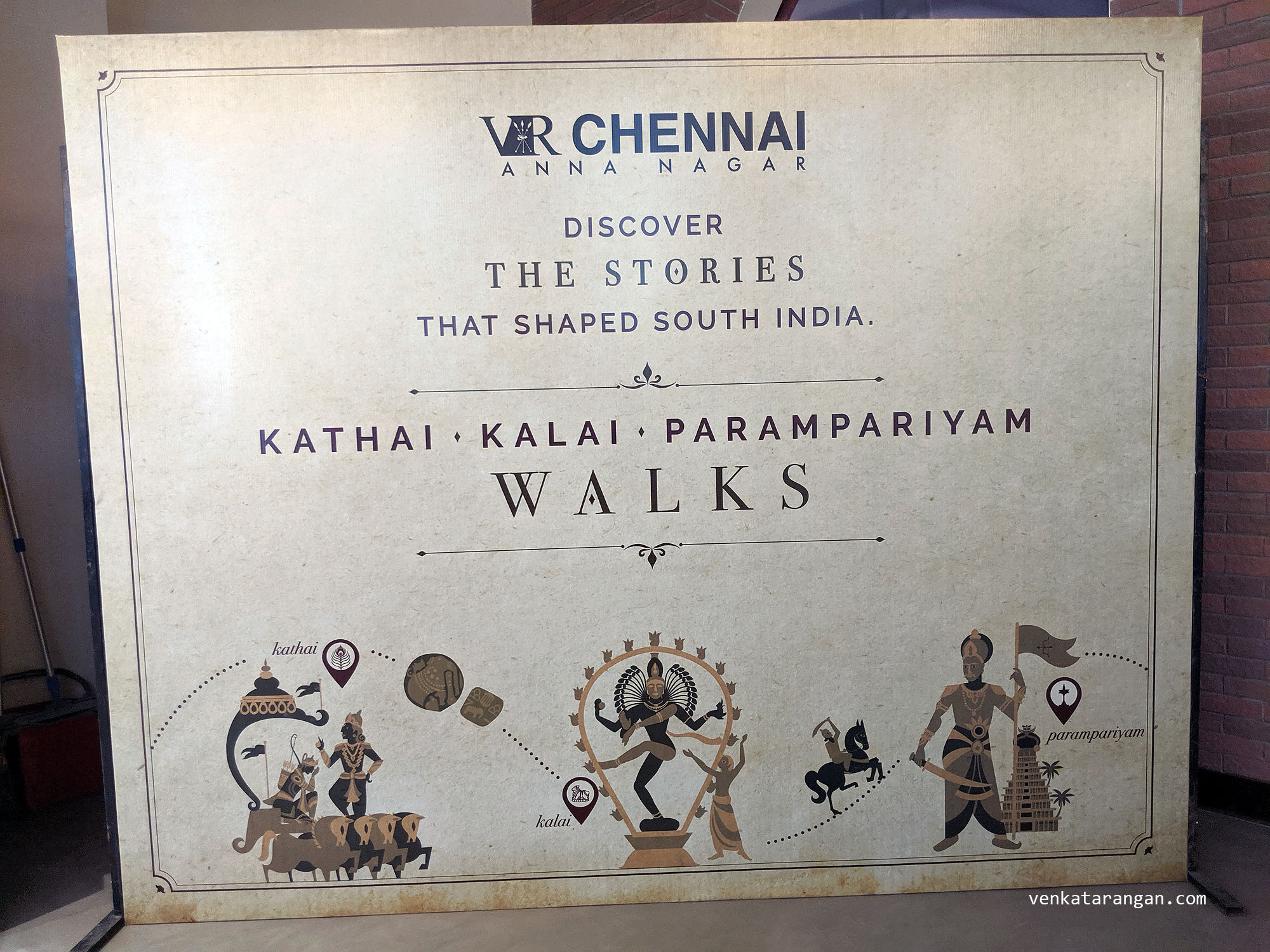
VR Mall Chennai – Kathai, Kalai and Parampariyam by Sriram V
So when I saw the posting about a culture walk being done by Mr Sriram V titled “Stories of South India” at Chennai’s newest shopping arcade, the VR Mall, Anna Nagar I was intrigued. If anyone can narrate elements of history in a place as modern as a mall it can only be Sriram V, for Madras (as we natives still call Chennai) outsiders, he is our most loved historian and storyteller. I signed up and turned promptly today (25th May 2019) 11 AM in the lobby of VR Mall.
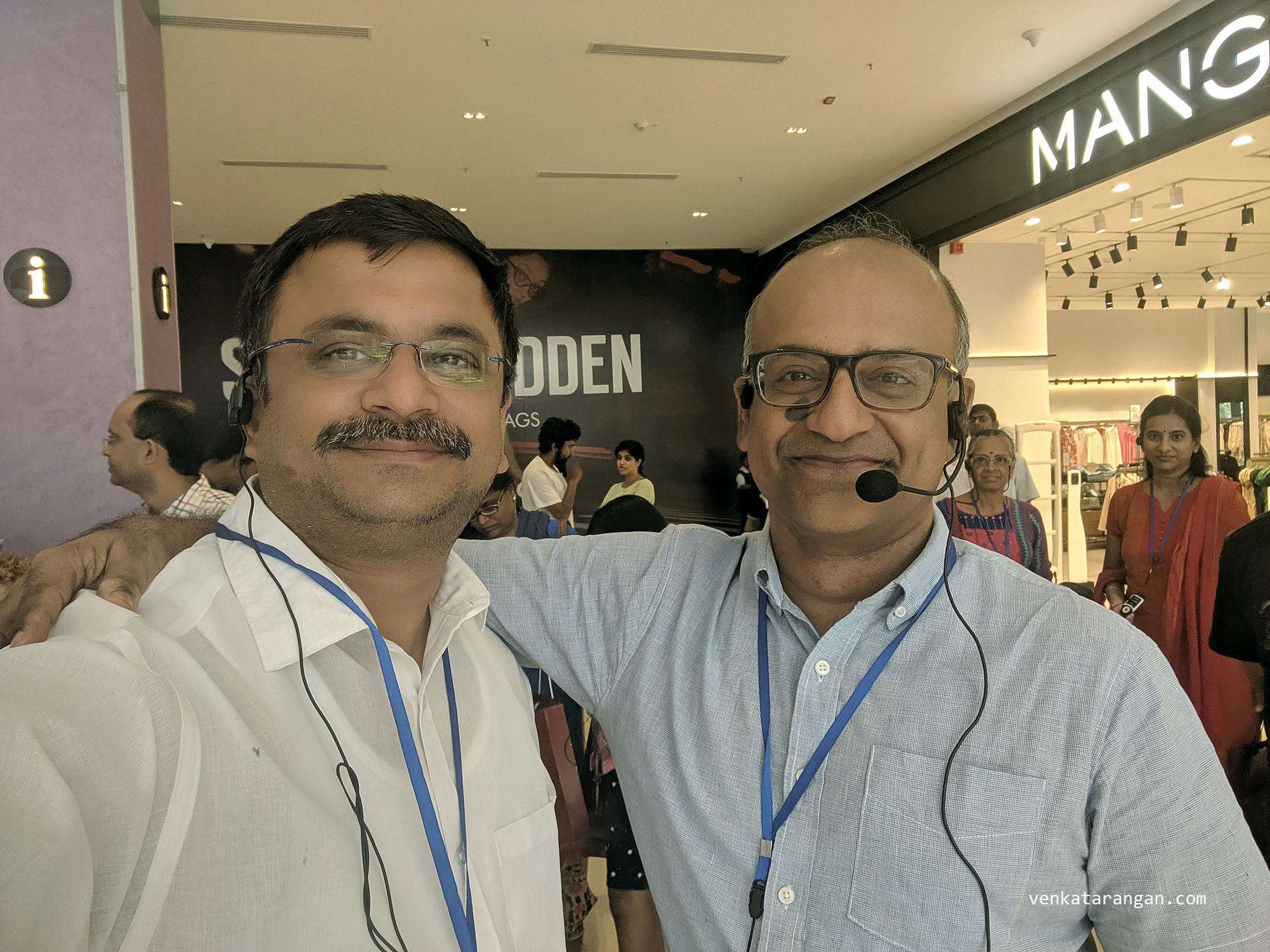
With Chennai’s most loved historian of Mr Sriram V – No one can make history as entertaining as he can in his tours
The 90 minutes walk covered three aspects as we were led around the mall:
- கதை (Kathai in Tamil means stories) was about tales of Dasavataram (the 10 avatars of Lord Vishnu). Across the mall, there are installations depicting all the ten manifestations – Matsya, Kurma, Varaha, Narasimha, Vamana, Parashurama, Ram, Krishna, Buddha and Kalki.
- கலை (Kalai in Tamil means art) was about the indigenous art and architecture of South India.
- பாரம்பரியம் (Parampariyam in Tamil means heritage) was about the tradition and history of Madras and surrounding regions.
The walk started from the east entrance called Uloka Gopuram (Metal Tower) which had carvings of the various dynasties that ruled South India. All the etchings were done by local artisans. The Cholas were seafaring rulers and the revenues earned abroad was used in the building of magnificent structures like the Tanjore Big Temple (தஞ்சைப் பெரியக்கோயில்).
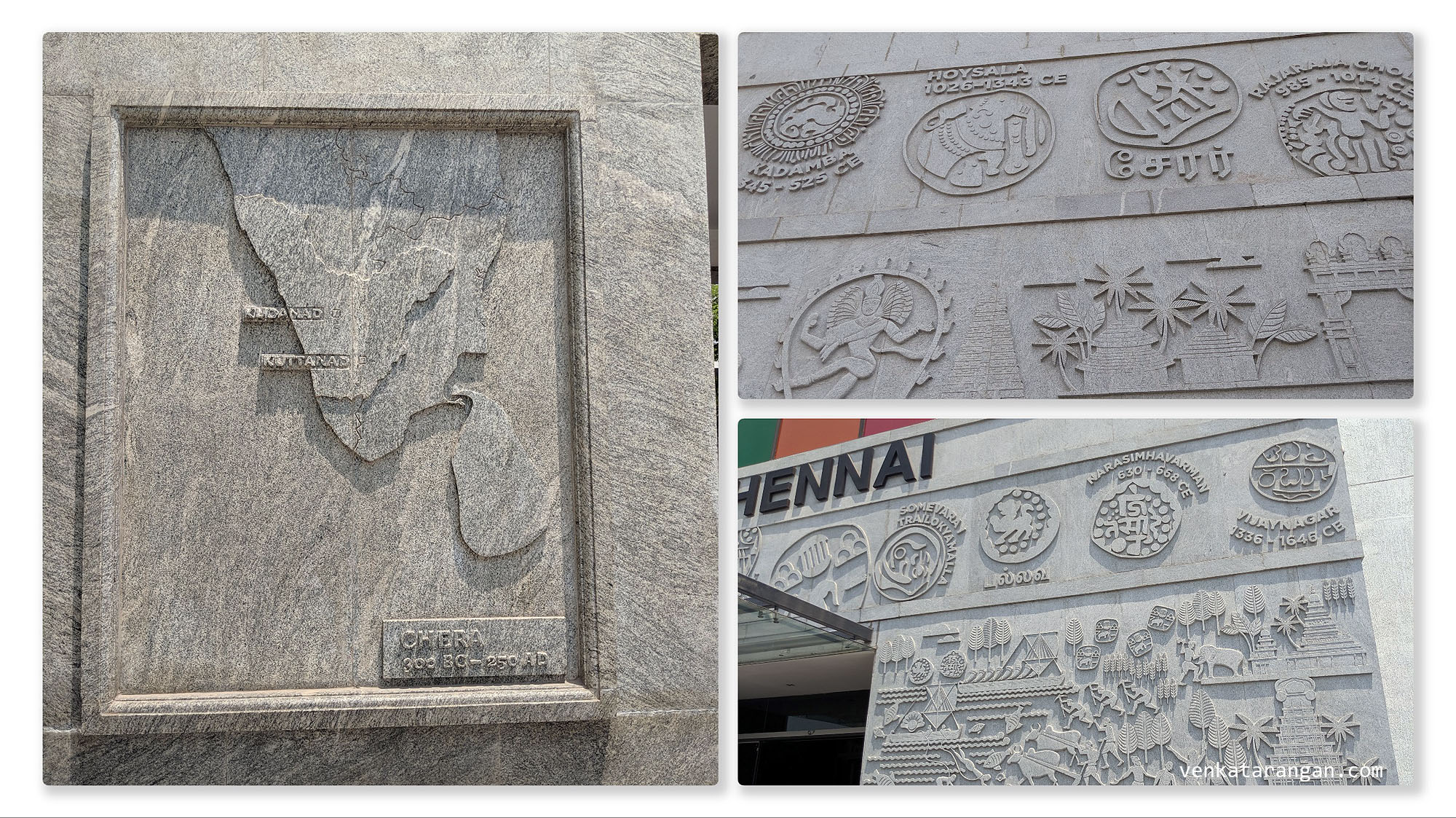
Chera, Chola, Pandyan Dynasty; The Hoysalas, Vijaynagar, Someshvara I and Kadambas
Matsyah Kurmo Varahas-cha Narasimhas-cha Vamana
Ramo Ramas-cha Ramas-cha Buddha Kalki-cha te dasaThe Fish, the Tortoise, the Boar, the Man-lion, the Dwarf,
Parasurama, Dasarathi Rama, Balarama, Buddha and Kalki – thy ten.—Sanctum entrance, Adivaraha cave (7th century), Mahabalipuram; earliest Lord Vishnu’s avatar related epigraphy
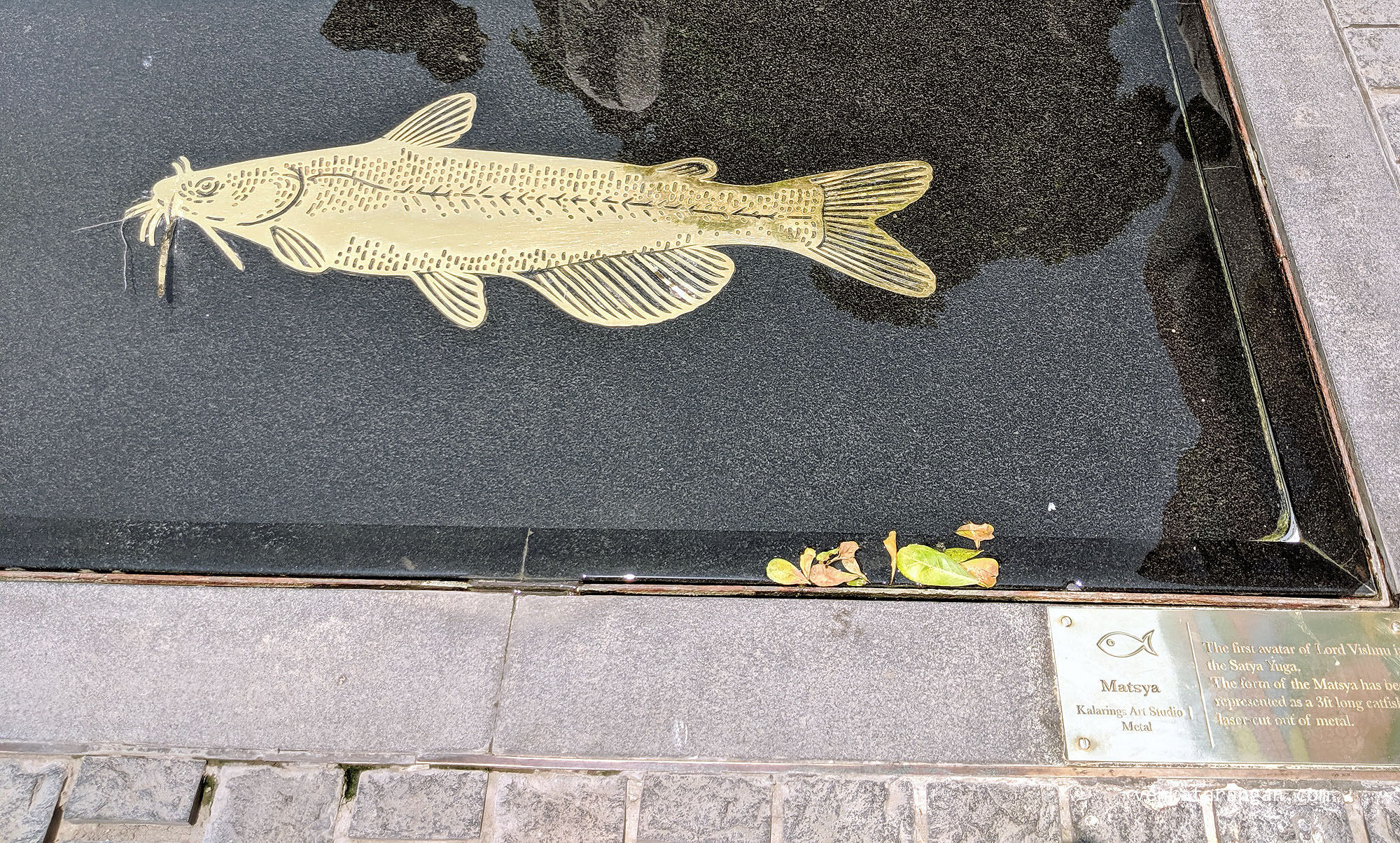
Dasavaratharam – 1. The Matsya – The narration of the familiar Dasavaratharam started with the Matsya (The Fish) which has represented as a 3ft long catfish.

Next stop was The Metal Bell weighing over 400 kg and over 10 feet in height and diameter, is embellished with the hall of Dasavatharam figurines
Sriram narrated the story of the famous Saivate Saint, Tirunilakanta Nayanar, who was a maker of mud pots living with his wife. They both worshipped Lord Siva in the form of Nilakanta (“Blue Throated one”). Due to the misconduct of the husband, the couple were living without any physical contact, that’s when Lord Siva deciding to play his trick comes as a yogi and gives them a mud pot to keep safe in their house till he returns. Upon his return, the pot goes missing and the couple is forced by Lord Siva to join their hands to take a dip in the holy temple lake and swear their innocence.
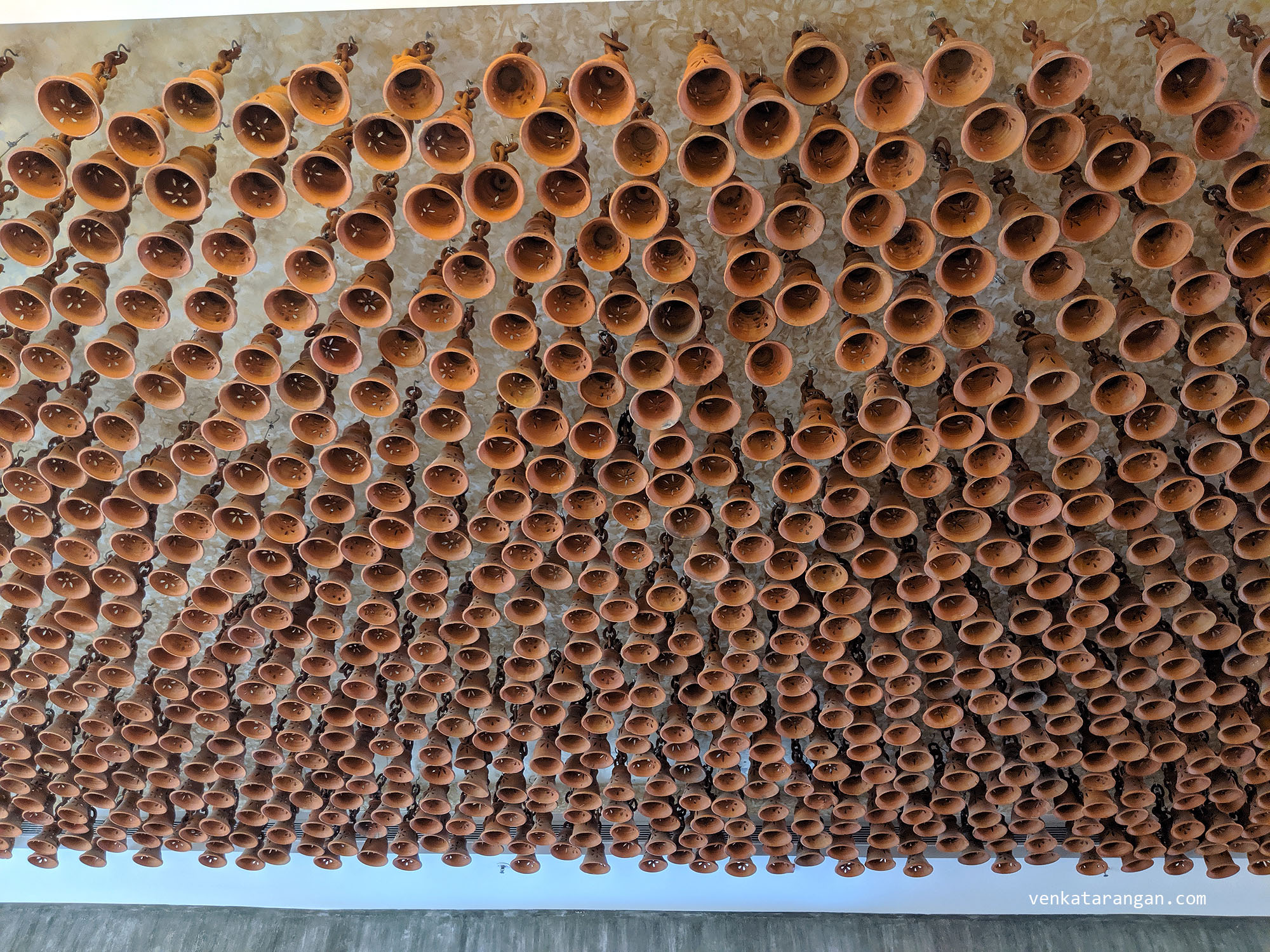
1001 Terracotta bells that have been handcrafted by local potters are hung from the main foyer
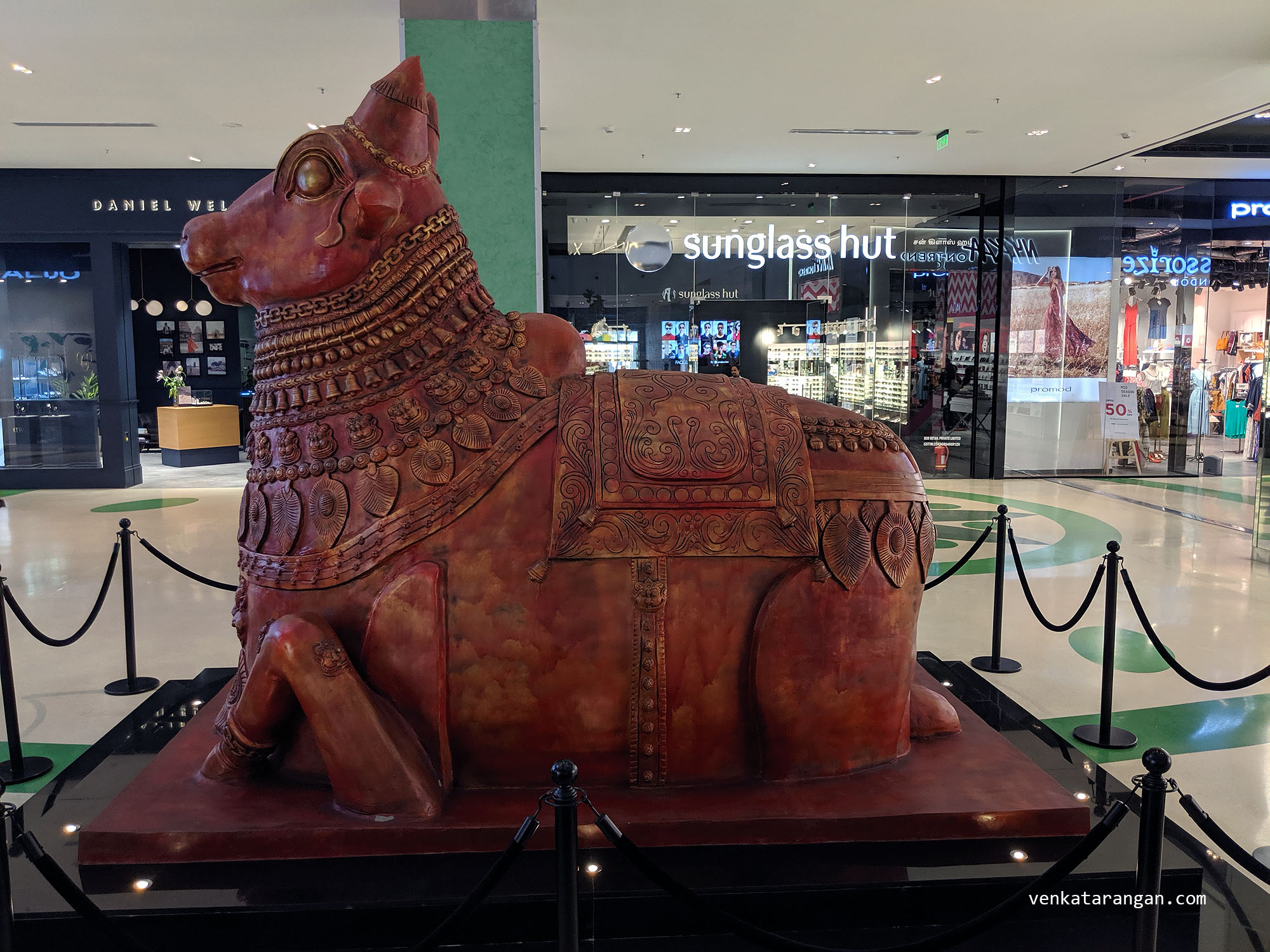
Nandi, the majestic bull that guards the Kailash Parbat – the residence of Lord Shiva. The sculpture weighing over 350 kg and 10 feet tall is a replica of the Nandi in the temple in Gangaikonda Cholapuram

Dasavaratharam – 2. The Kurma (The Turtle) can be seen near a water stream and in this painting that shows the act of Samudra Manthan that involved churning of the cosmic ocean in the search for Amrut (the nectar of immortality)
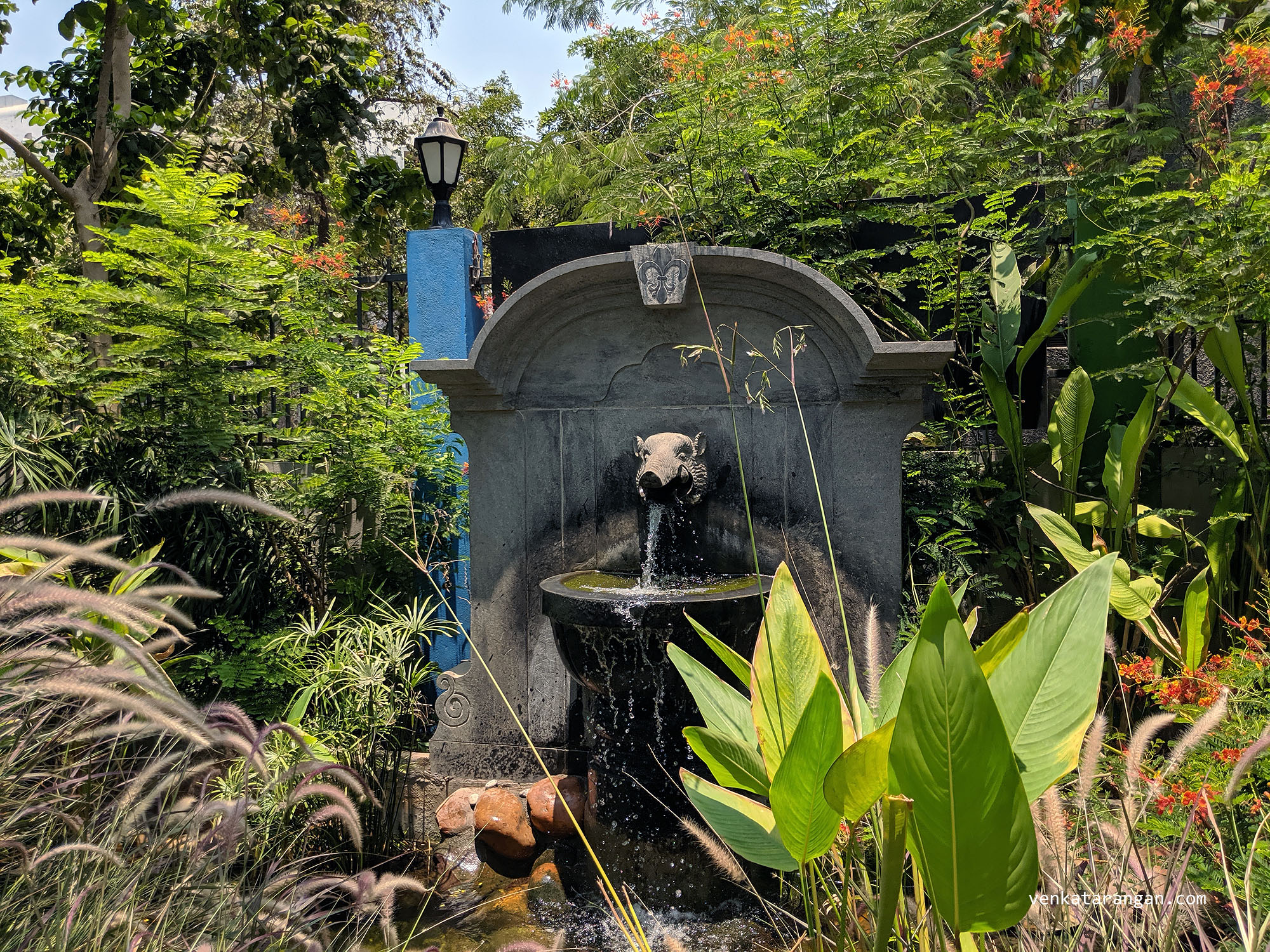
Dasavaratharam – 3. The Varaha (The Boar) is represented in the form of a water fountain with a boar head for a water sprout

Dasavaratharam – 4. The Narasimha (The half lion and The half human) is represented by a hand-painted mural. The mural is just feet away from the main entrance equidistance from the outside and the inside as in the mythology.
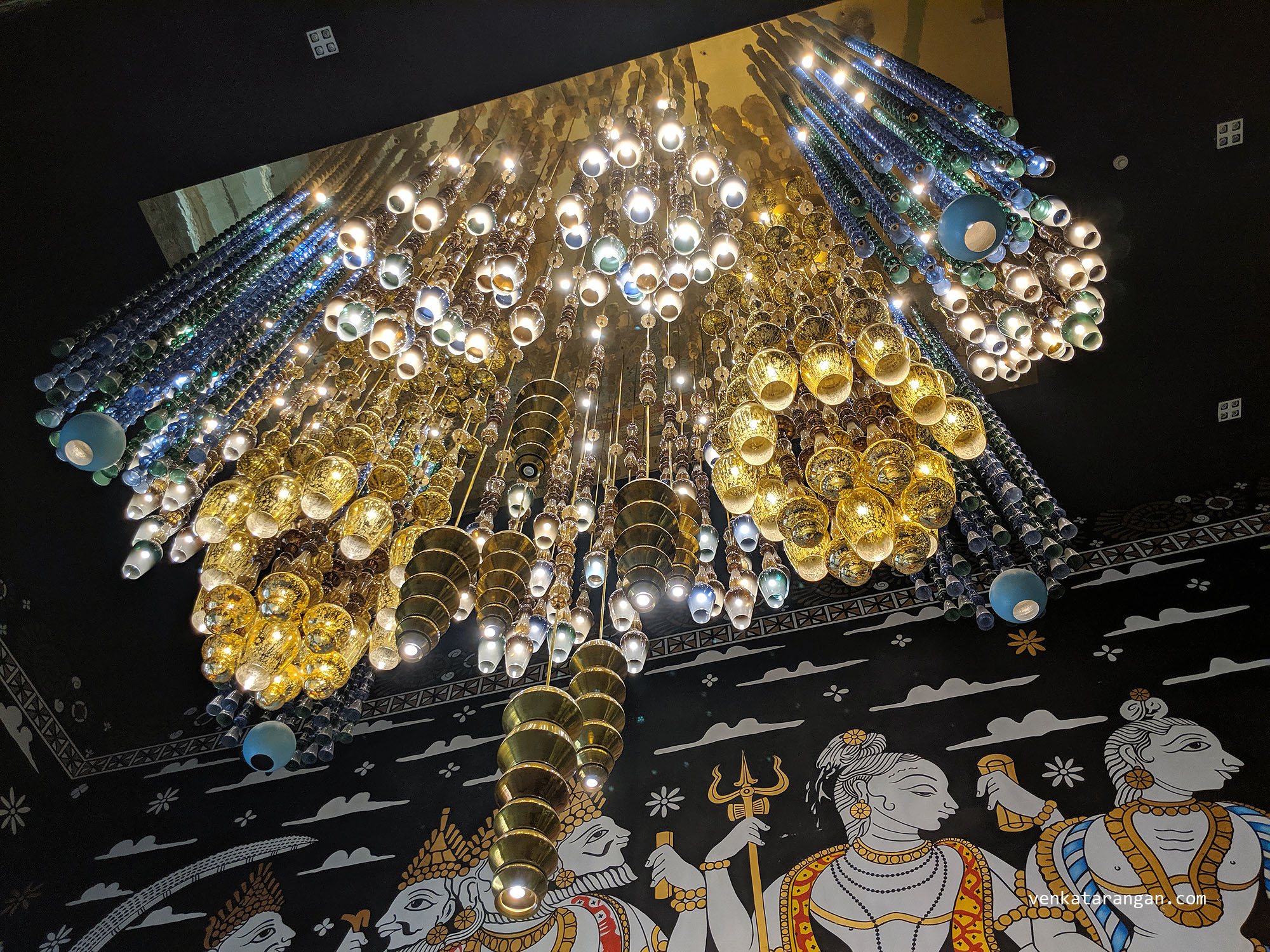
The chandelier lights were mesmerizing

Dasavaratharam – 5. The Vamana (The Dwarf) is shown by a mural that is 15 feet in height that depicts the moment when Mahabali offers his head to the lord.

Dasavaratharam – 6. The Parashuram (Lord Ram with an Axe) is shown by a mural depicting the moment when Lord Varuna, the God of Rains, blesses Parashuram while he sits in meditation.
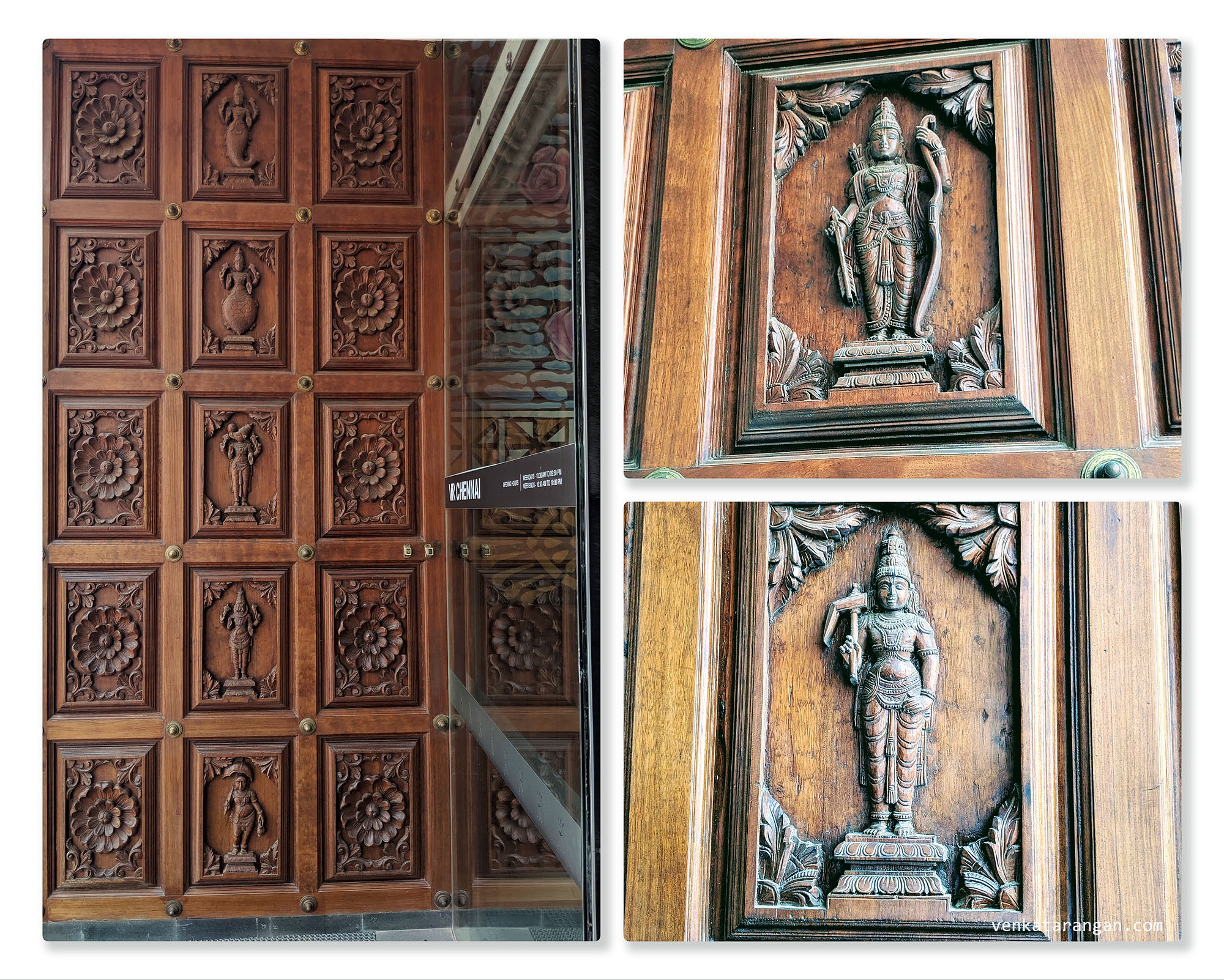
Dasavaratharam – 7. Lord Ram is represented by a hand-carved image on the main door as it is in the Ramaswamy Temple in Kumbakonam. The Temple was constructed by Govinda Dikshitar, Prime Minister of the Nayak Rulers in the 16th Century, following a succession war among the Nayak rulers.
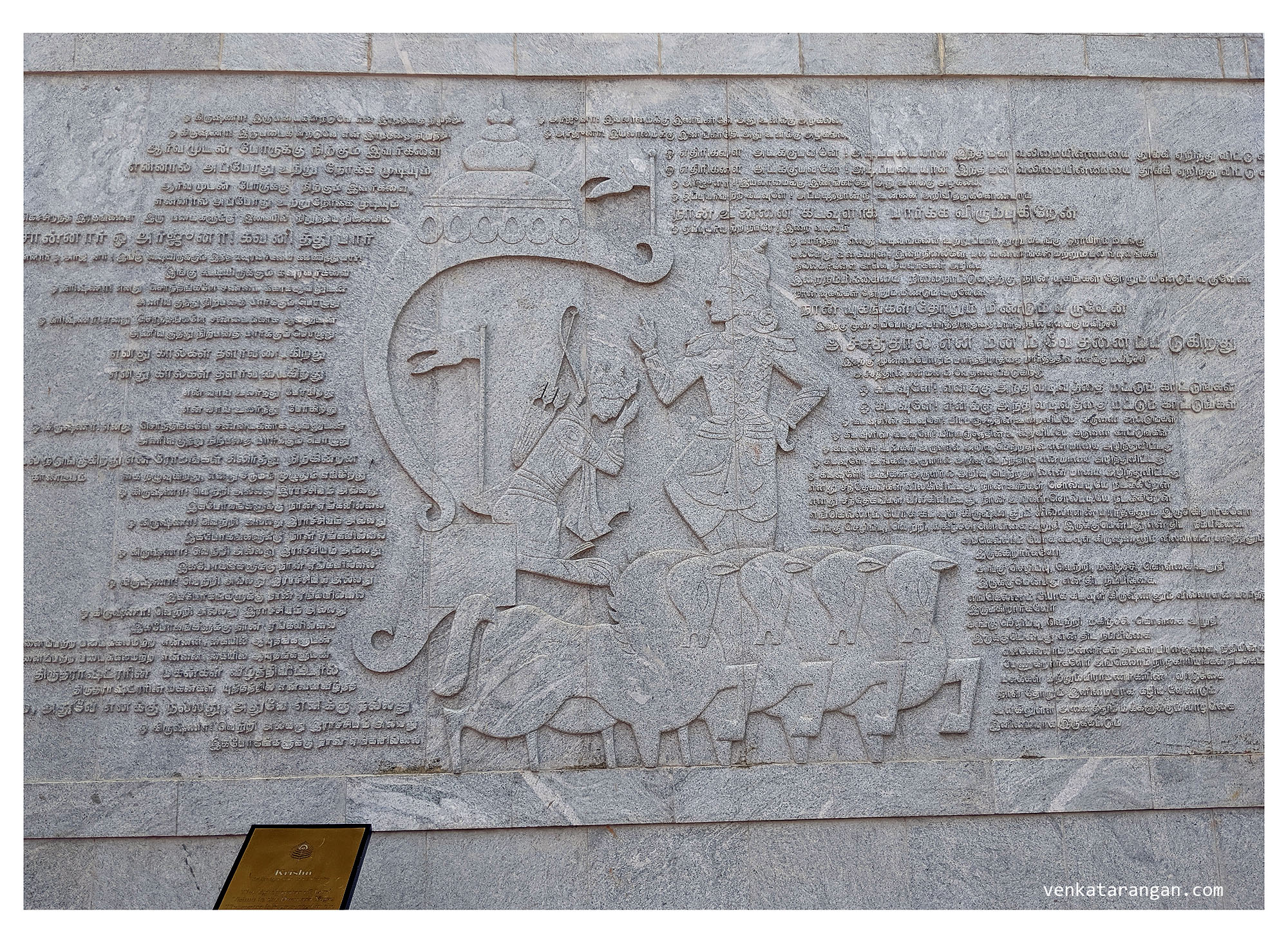
Dasavaratharam – 8. Lord Krishna is represented by verses and the scene from Bhagavad Gita when he preaches to Arjuna.
Near one of the entrances, I noticed the inscription of a popular song by Oothukkadu Venkata Kavi (1700-1765) who was one of the pioneering composers in Indian classical Carnatic music. It has been sung beautifully by veteran artist Smt Aruna Sairam here and it is a favourite of mine.
என்ன பதில் சொல்வேனடா என் அருமை கண்மணியே
மாடு மேய்க்கும் கண்ணா நீ போக வேண்டாம் சொன்னேன்
பாலருடன் வீதியிலே பந்தாடுறான் என்று சொல்லு
தேடி நீ வருகையிலயே ஓடி வந்து நின்றிடுவேன்
போக வேண்டும் தாயே தடை சொல்லாதே நீயே
– திரு ஊத்துகாடு வேங்கட கவி

A popular song by Oothukkadu Venkata Kavi (1700-1765) who was one of the pioneering composers in Indian classical Carnatic music, is seen etched in a wall
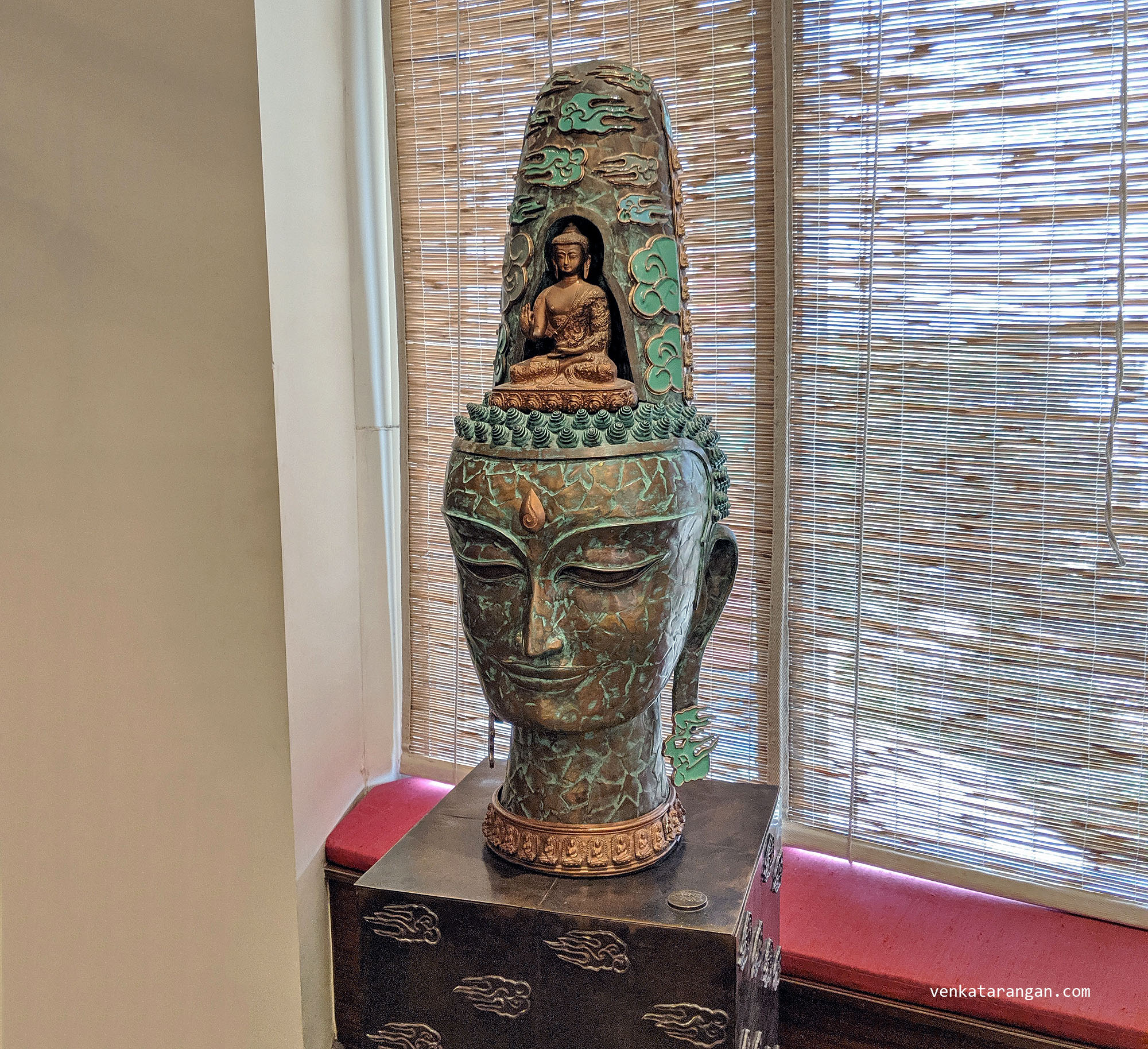
Dasavaratharam – 9. Lord Buddha is represented by a 7 feet 6 inches sculpture in the building adjacent to the main mall near The Hive. Sriram added that “Lord Buddha is considered to be a part of Dasavartharam by many works including those of Jayadeva and Anamaacharya. In Vaishnavism Lord Buddha is considered to be a Digambara.”
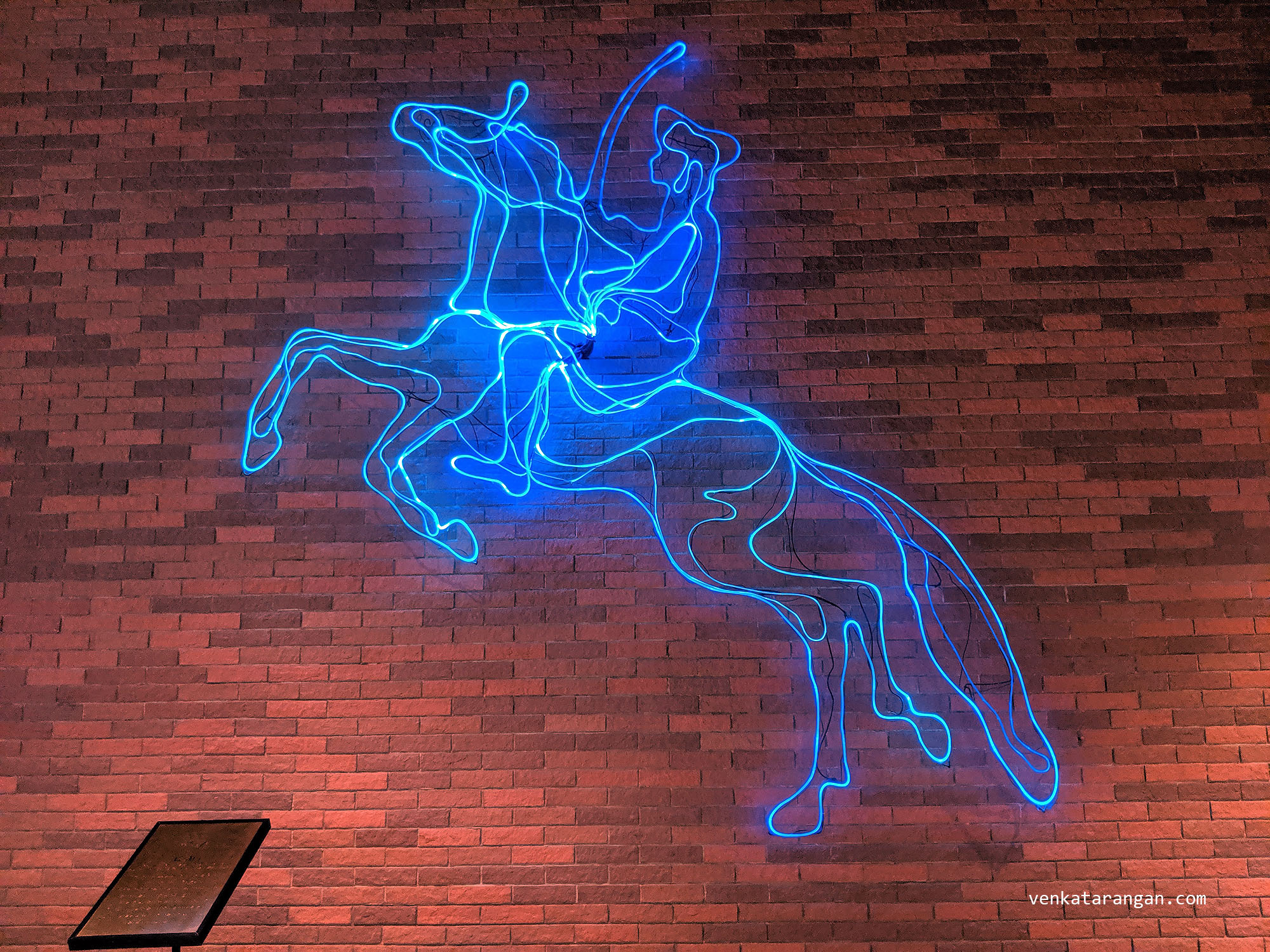
Dasavaratharam – 10. Lord Kalki is represented nearby to Buddha, as a sketchy wireframe and elements of light.
Near the unfinished Maram Gopuram (Wooden Tower) Sriram narrated the history of Bleeding Madras – a spun yarn that was woven in India, whose dyes not being colourfast will result in bleeding and giving a new look, of Madras Check design and of Kalamkari cotton textile which is now identified with Andhra Pradesh and Telangana was actually spread across the whole of South India.
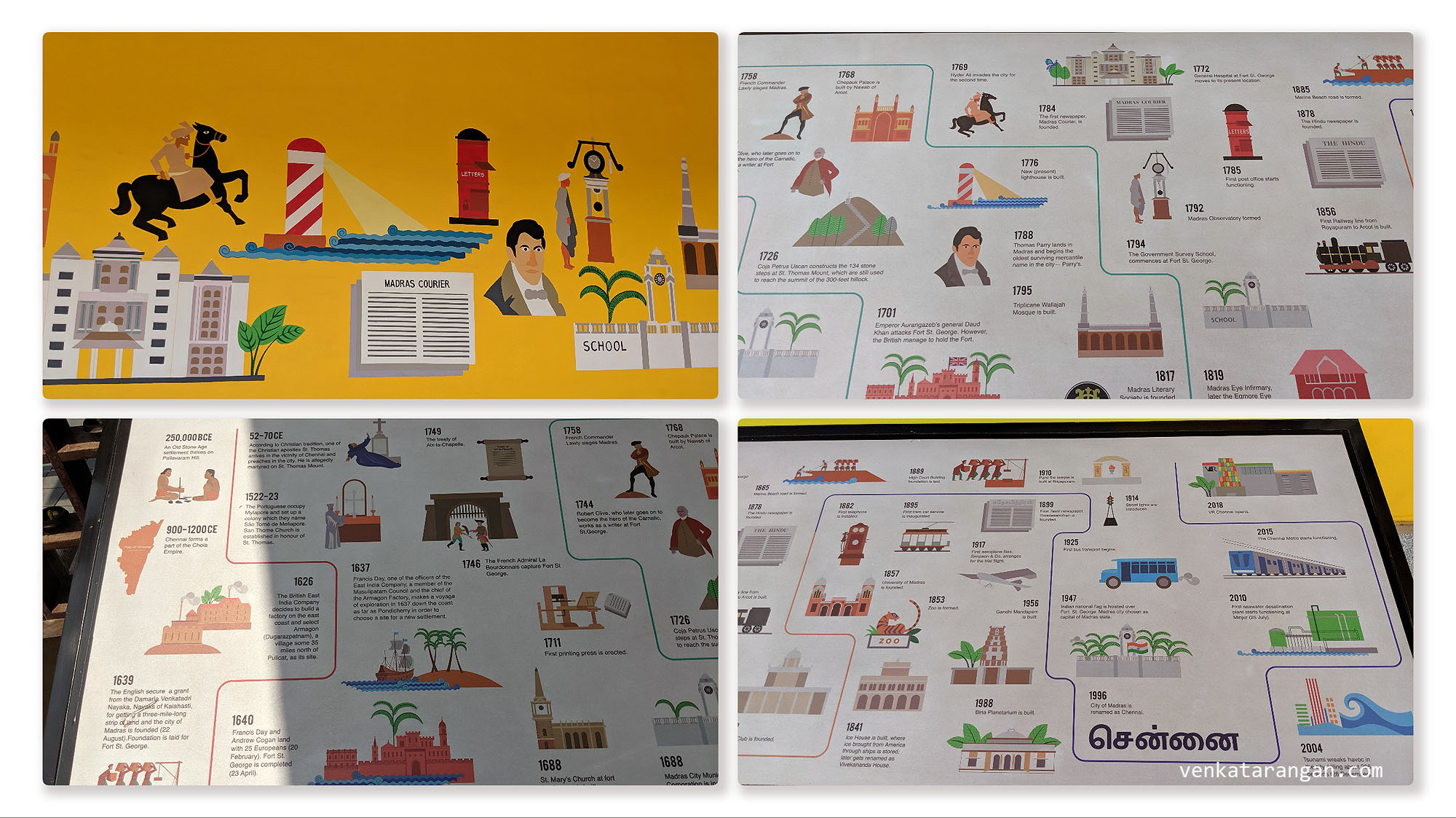
The History of Madras (Chennai)
The last stop was North Entrance (Kaliman Gopuram or Earthen Tower) which sports paintings showing the timeline of the City of Chennai (Madras):
- from the Paleolithic Age (500,000 BCE or older) confirmed by stone tools from that age discovered by geologist Robert Bruce Foote in 1863 at the Brigade Ground at Pallavaram, Chennai.
- to 22 August 1639 Francis Day acquiring the land for St.George.
- and continues to the time of Indian national flag being hoisted over Fort St.George.
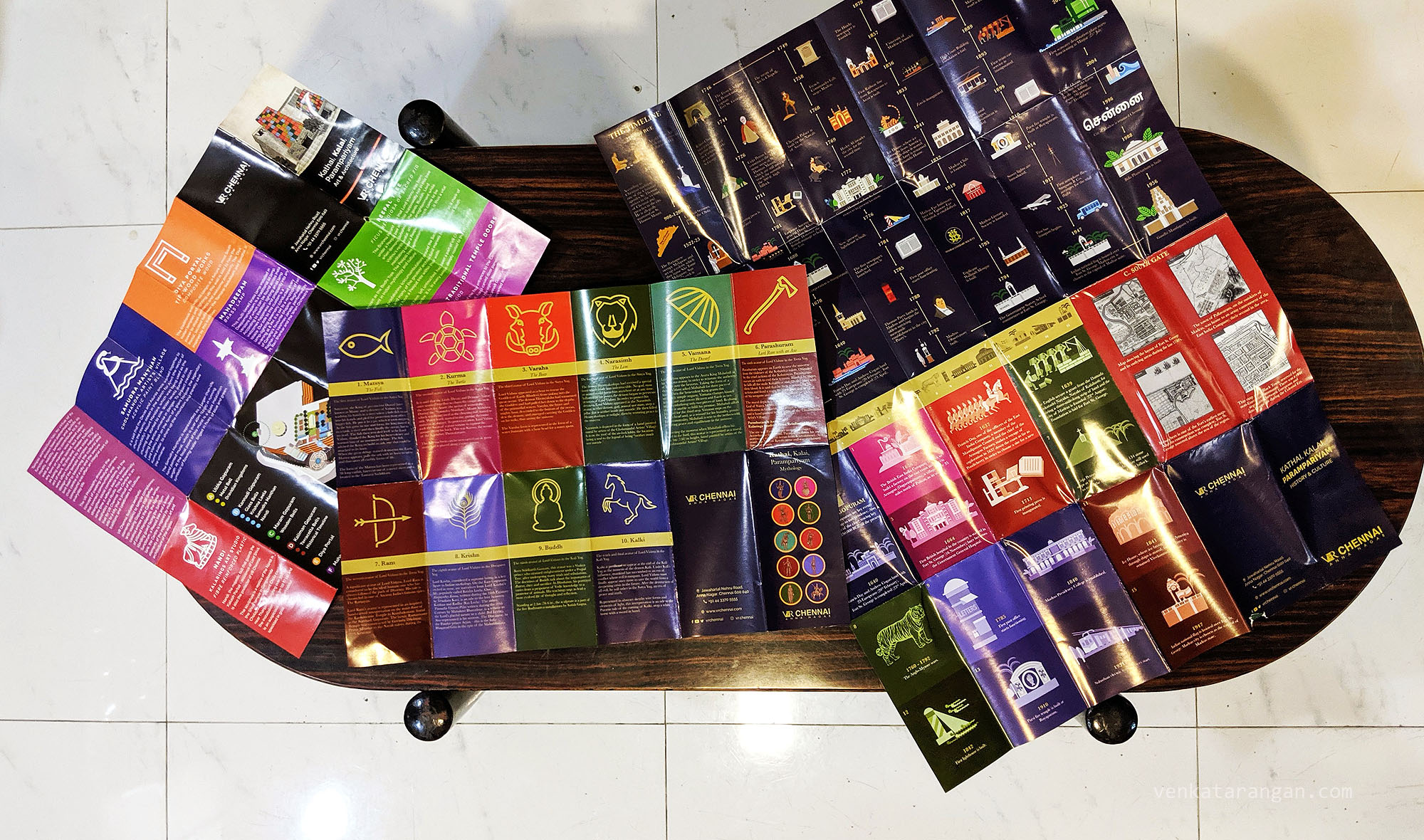
The three beautiful Pamphlets they gave at the end of the walk which talked Dasavatharam, Architecture of South India and the History of Madras
Lastly, the board of Virtuous Retail, the promoters of VR Mall, Chennai for taking the effort and the interest in incorporating local heritage in their commercial shopping malls. I have taken inspiration from here to incorporate in all my future construction projects (if I do one!).


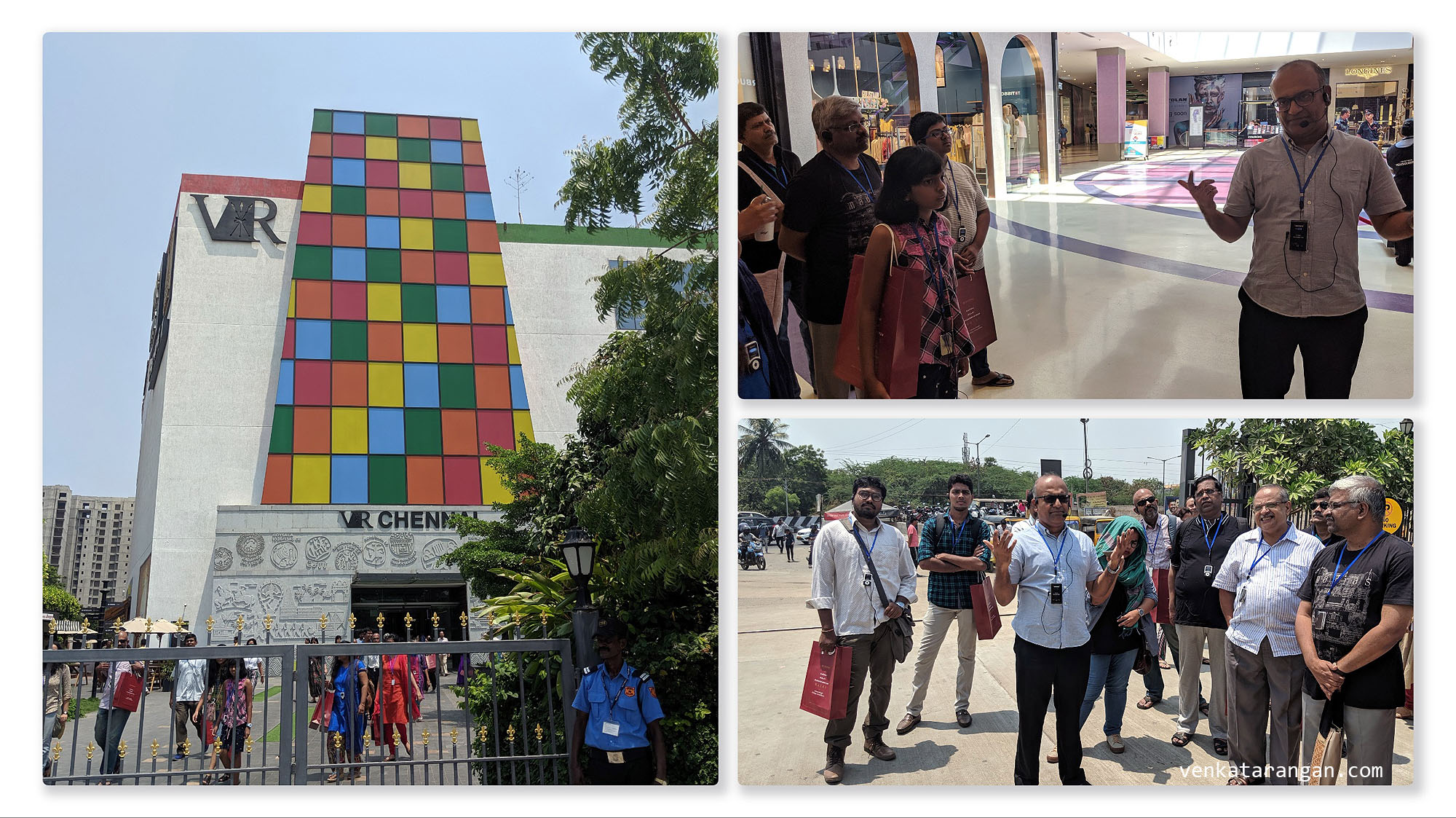
Comments